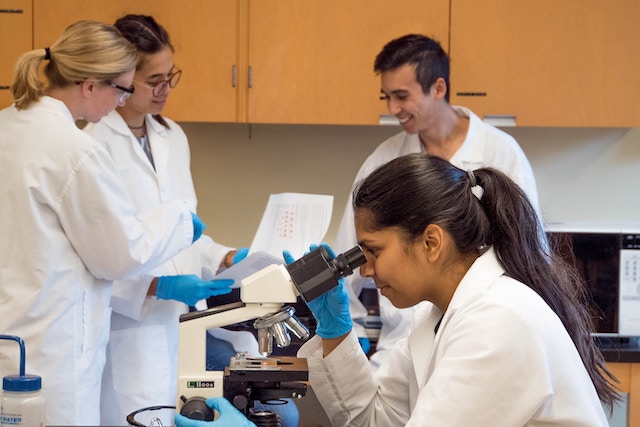Biggest Scientific Breakthroughs Made by Students
The products of research done by students and their supervisors working at universities around the world have an impact on our lives, often in ways, we don’t even realize. Some of their discoveries have changed the world, others have saved lives, but many have had an impact that went far beyond the walls of the universities.
These scientific breakthroughs were often made in the course of doing research in order to complete an assignment. Even the smallest discovery can lead to another and another – eventually leading to a major breakthrough, such as those discussed here.

Penicillin
Ernest Duchesne, a student of 23, was doing research for his doctoral thesis in 1987 when he made some interesting discoveries about molds. In one of his experiments, he discovered that by injecting mold into a guinea pig with a bacterial infection, he could cure the animal.
He didn’t use the mold that produces penicillin which is why his research may have been overlooked. A similar experiment done 35 years later by Alexander Fleming earned him the Nobel Prize. Duchesne was only honored for his discovery posthumously, when his thesis was rediscovered, five years later.
If you are a student, and you’re reading about Duchesne’s amazing accomplishment at the age of 23, don’t be discouraged by the fact that you don’t even know how to write a report type assignment yet. Most students take time to master how to write an assignment and how to conduct research.
A fungus that eats polyurethane
One of the problems we face today is all the plastic filling up landfills. When some undergraduates from Yale went to Yale’s laboratory in the Amazon, they found a species of fungus that is able to break down polyurethane, a common plastic.
Jonathan Russel, one of the students, was able to isolate the enzyme used by the fungus to degrade the plastic. The fungi digest the plastic and do not release carbon dioxide or monoxide like when plastics are burned to dispose of them.
The findings were published in Applied and Environmental Microbiology. One of the biggest environmental problems we have today is the safe disposal of plastic and discoveries like this can potentially help us to solve it.
You may think that you don’t even know how to write an assignment in APA style, let alone make a groundbreaking discovery like these Yale students. Everyone has to start somewhere and if you’re willing to learn from others, your contribution to research can help.
One Cancer puzzle solved
Curing cancer is no doubt still a way off but even minor advancements towards this goal are worth celebrating. Victoria Hilditch, while doing her final year of biomedical science at Bangor University, has helped to solve a problem that researchers have been puzzled by for years.
They didn’t understand how it was possible for the cell growth regulator, Cdc2 to be inactive and active simultaneously. Hilditch made a breakthrough when she discovered that Cdc2 exists in seven forms. This helped her supervisor to realize that the modification patterns of the seven forms were different – explaining the mystery.
If you’re a student and you want to know how to create a cover sheet to an assignment, don’t let this hold you back from doing important research as it is easy to get some help. If you still find it difficult, seek help from an assignment writing service that deals in college assignments and other related writing work.

Insulin-producing cells
In 1869, a German medical student, Paul Langerhans, first identified the cells that produce insulin in the pancreas. Prior to his thesis, knowledge about the pancreas was limited. In his thesis, he described nine different cells in the pancreas,
Initially, he thought the cells were receptors for signals of the nervous system because of their dendritic nature but in a later paper said he no longer thought this.
The cells Langerhans discovered were only named 25 years later by Laguesse, a histophysiologist, who also came up with the hypothesis that they were a site of internal secretion. The term insulin was only introduced in 1909 but the early research of Langerhans had a significant part to play and now thousands of lives can be saved by injecting insulin.
The first pulsar
As a research student at Cambridge University in 1965, Jocelyn Bell Burnell helped to build a large radio telescope designed to monitor quasars. She found some anomalies while analyzing data and pointed them out to her thesis supervisor, Anthony Hewish.
Over the following months, the team eliminated all possible sources of radio pulses – affectionately labeled Little Green Men – until they were able to deduce that they were made by neutron stars, rapidly-spinning collapsed stars too small to form black holes.
The bottom line
Reading about all these accomplishments by students is inspiring. Don’t be discouraged if you feel you don’t even know how to write an introduction for an assignment yet.
The research done by university students is very important, as we can see from the discoveries they make. Sometimes all it takes is one small breakthrough to start a chain reaction and lead to the discovery of penicillin, insulin or a way to solve some of the world’s biggest problems today – like plastic pollution or cancer.
Ray Campbell is a freelance academic writing expert working with online writing services that provide college and university students with assignment help. He’s also a renowned blogger and his work is around gadget, SaaS and apps reviews. In his free time, he likes to spend time playing video games, reading fiction and DIY woodworking.
